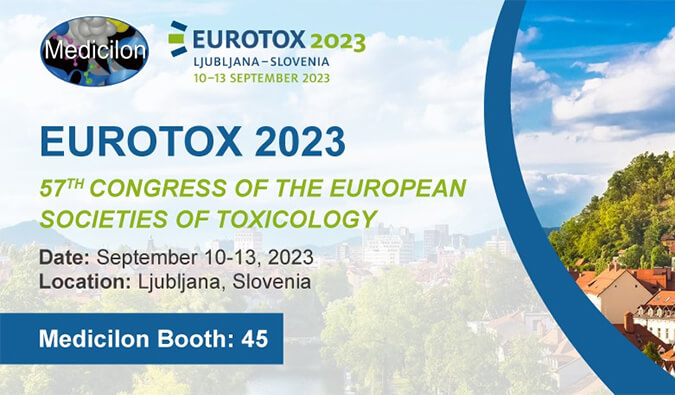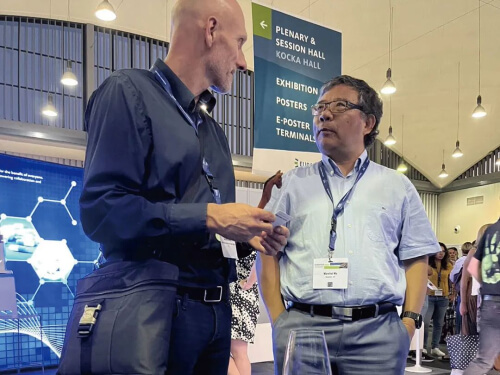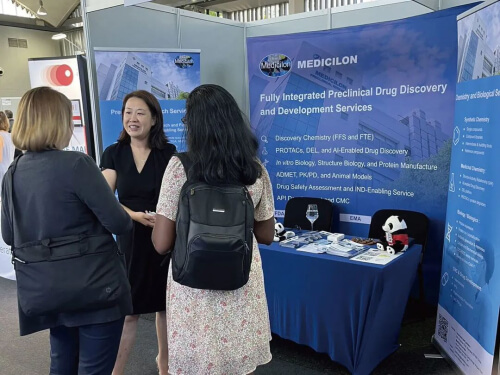



業(yè)務(wù)咨詢
中國:
Email: marketing@medicilon.com.cn
業(yè)務(wù)咨詢專線:400-780-8018
(僅限服務(wù)咨詢,其他事宜請撥打川沙總部電話)
川沙總部電話: +86 (21) 5859-1500
海外:
+1(781)535-1428(U.S.)
0044 7790 816 954 (Europe)
Email:marketing@medicilon.com





歷經(jīng)四年等待,第57屆歐洲毒理學(xué)家和歐洲毒理學(xué)會大會(57TH CONGRESS OF THE EUROPEAN SOCIETIES OF TOXICOLOGY,EUROTOX 2023)終于回歸線下,在斯洛文尼亞盧布爾雅那熱烈舉辦。
本次大會由斯洛文尼亞毒理學(xué)會主辦,主題是:Toxicology – multidisciplinary science leading to safer and sustainable life(毒理學(xué)--引領(lǐng)更安全和可持續(xù)的多學(xué)科科學(xué))。涵蓋現(xiàn)代毒理學(xué)的多角度議題,并基于毒理學(xué)的廣泛性和跨學(xué)科合作的重要性,展開分享和研討。
日期 | 2023年9月10-13日
地點 | 盧布爾雅那,斯洛文尼亞
美迪西展臺 |#45


藥物的毒性評估是藥物開發(fā)過程中非常重要的一環(huán)。隨著技術(shù)進(jìn)步,研究人員深入毒理機(jī)制,不斷改善毒理學(xué)研究中的新工具和策略,以減少藥物開發(fā)中與安全相關(guān)的損耗。毒理學(xué)在臨床前的目標(biāo)也不再是簡單的“前負(fù)荷”消耗,還將能夠減輕藥物副作用,開發(fā)更安全的生物標(biāo)志物納入研究范圍,從而為藥物臨床成功增添一份可能性。
此次大會安排了一系列精彩的學(xué)術(shù)內(nèi)容,美迪西精選了重點報告信息,供您參考。
阿片類藥物相關(guān)毒性:從呼吸抑制到用藥過量流行病
講者:Bruno Mégarbane (FR)
時間:Monday, 11 September,08h30 – 09h30
暴露組會徹底改變毒理學(xué)實踐嗎?
EUROTOX辯手: Robert Barouki (Université de Paris, FR)
SOT辯手: Robert Wright (Icahn School of Medicine at Mount Sinai, NY, US)
時間:Monday, 11 September,13h00 – 14h00
機(jī)制的重要性: 導(dǎo)向因果概念,提供風(fēng)險評估依據(jù)
講者:Lois D. Lehman-McKeeman (Bristol Myers Squibb, NJ, US)
時間:Tuesday, 12 September,08h30 – 09h30
迷你豬的轉(zhuǎn)化知識:減少在非臨床安全性研究中使用非人靈長類動物的出路
講者:Steven van Cruchten (University of Antwerp, BE)
時間:Tuesday, 12 September,13h00 – 14h00
S01: Human biomonitoring – a view to the future based on current achievements
人類生物監(jiān)測--基于現(xiàn)有進(jìn)展的未來展望
S03: Current and future perspectives on the extended one-generation reproductive toxicity study (EOGRTS)
延長一代生殖毒性檢測(EOGRTS)的當(dāng)前情況與未來展望
S05: Consideration of the endogenous exposome in risk assessment
風(fēng)險評估中對內(nèi)源性暴露體因素的考慮
S07: Involvement of mitochondria in adverse drug reactions
線粒體參與藥物不良反應(yīng)
S09: Current use of NAMS/alternatives in DART testing
目前在 DART 測試中使用的NAMS/替代方法
S11: Contact allergen potency: the missing piece in the huge puzzle of alternative methods
接觸過敏原效力:替代方法的巨大難題中缺失的一環(huán)
S12: Finding synergies for 3Rs – toxicokinetics, physiologically-based kinetic (PBK) models and read-across
尋找 3R 的協(xié)同作用--毒代動力學(xué)、基于生理學(xué)的動力學(xué) (PBK) 模型和讀數(shù)交叉
S13: Acceptance and use of in vitro methods: a perspective from various chemical sectors
體外方法的應(yīng)用:來自不同化學(xué)領(lǐng)域的視角
S14: NAM mechanistic information for the risk assessment of chemical mixtures
用于化學(xué)混合物風(fēng)險評估的NAM機(jī)理信息
S15: Next generation risk assessment of food chemicals, environmental contaminants and pharmaceuticals using open-source modelling platforms: perspectives from regulatory agencies, academia and industry
利用開源建模平臺對食品化學(xué)品、環(huán)境污染物和藥品進(jìn)行下一代風(fēng)險評估:來自監(jiān)管機(jī)構(gòu)、學(xué)術(shù)界和工業(yè)界的觀點
S16: Organ-on-a-chip and the developing role in early drug development
器官芯片和在早期藥物開發(fā)中發(fā)揮的作用
S17: Critical organs and exposure windows for developmental immunotoxicity assessment
發(fā)育期免疫毒性評估的關(guān)鍵器官和暴露窗口
S20: Are diseases and conditions related to hormone imbalance really increasing?
與荷爾蒙失調(diào)有關(guān)的疾病和病癥真的在增加嗎?
S21: Environmental chemical mixtures and cancer hallmarks – new developments and open questions
環(huán)境化學(xué)混合物和癌癥標(biāo)志--新進(jìn)展和未決問題
S22: Role of immunity and contribution of immunotoxicity in the identification of non-genotoxic carcinogens
免疫的作用和免疫毒性在確定非遺傳毒性致癌物中的貢獻(xiàn)